All about watering watermelons
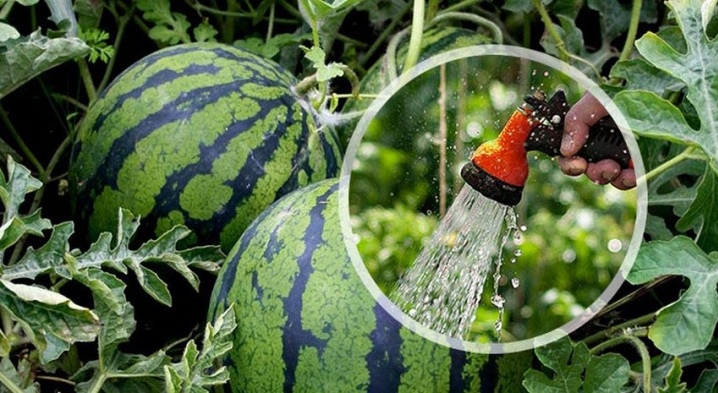
What is a watermelon, if not the most delicious berry? It is difficult not to love this product in its pure form - juicy and sweet, low-calorie, and in fact it is also salted and even fried in a caramel coat. But before you feast on, the watermelon still needs to be grown in accordance with all the rules of agricultural technology. But you can make mistakes as easy as watering watermelons.
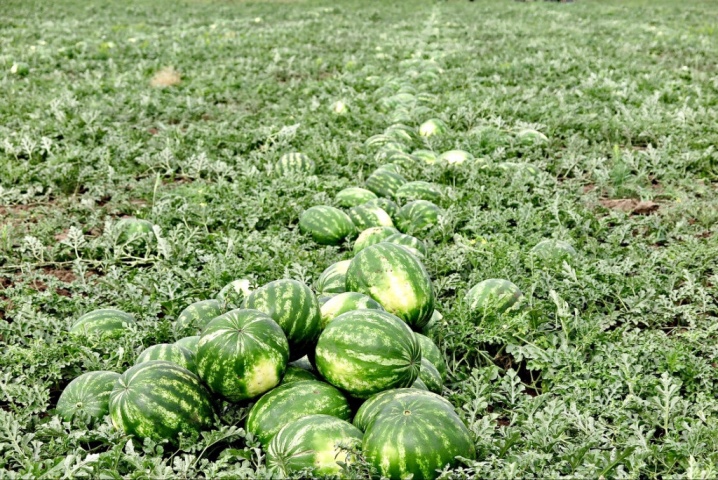
General rules
A good yield of melons largely depends on proper watering, taking into account the phases of the plant's growing season. If there is not enough water for the watermelons, the fruits will noticeably lose weight and taste. It is especially important for melons to get the right amount of water after shoots appear.
Here are the basic rules for watering.
- Previously, watermelons were grown only in southern latitudes, but later the work of breeders helped to develop varieties that grow well in the middle lane with a more humid climate. The frequency of watering also depends on where the watermelon is grown. In regions where the amount of annual precipitation is large, watering is needed only in the initial phases of the growing season, after which it is simply canceled.
- You should also focus on groundwater. Watermelons located within 1 m from the water need less watering than those that are 2 m away from it.
- Care methods, principles of agricultural technology also affect the frequency of watering. It is mainly about loosening the soil and mulching. If this is done, moisture will stay in the ground longer, which means less watering.
- The need for watering depends on the diagnosis of the condition of the soil. The soil must not be allowed to dry out more than 5 cm. A wooden stick is enough to check its moisture content. If it sinks more than 5 cm into the soil, and dirt adheres to it, watering is not needed. You can use a pencil instead of a stick.
- All watermelon varieties (and hybrids too) are drought tolerant crops. This means that the root system of plants is able to absorb moisture from the ground, and it does it very well. Watermelon roots can handle this even if the soil moisture is only 6%. But at the same time, the level of water consumption in a watermelon is large: to get a 5-kilogram fruit, the plant "drinks" 160 liters of water.
- A watermelon needs more moisture at the stage of flowering and the formation of an ovary.
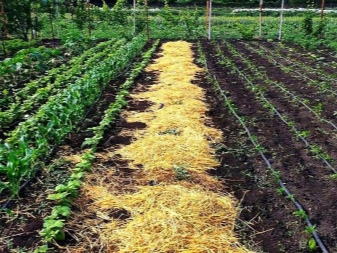

Waterlogging is a danger to melons. It leads to a delay in the growth of the culture and a decrease in its taste. It is important to maintain the humidity level within optimal limits, because if it is not stable, the fruits will turn out to be fibrous, and it is possible that the apical rot will attack the watermelons.
What kind of water is right?
You definitely can't use cold water. Ideal if irrigation is provided by a drip irrigation system... It is she who makes it possible to use water resources correctly and rationally. Dosed water supply is also a guarantee that the watermelons will not be "flooded", that is, overwetted. Finally, with drip irrigation, the leaves do not actually come into contact with the liquid.
The optimum temperature coincides with the air temperature... Watermelons love that they cannot be "shocked", as happens if watering is carried out with cold water. Cold water is dangerous by the decay of the plant, which will lead to the subsequent death of its parts. And if you use, on the contrary, hot water, melons will not like this either: hot water will damage the shoots, and it will evaporate very quickly.
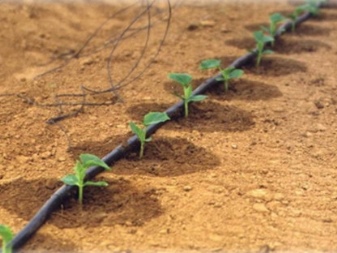
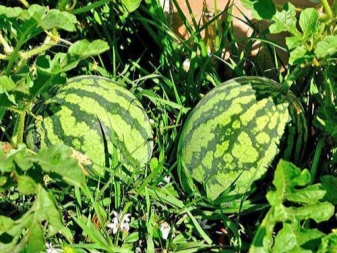
Watering volume and frequency
It is recommended to water the watermelons in the evening, at sunset. And it is not so important whether they grow in a greenhouse or in an open field.
In the greenhouse
Summer big berry is very fond of warmth, and if the climatic conditions of the region cannot give it as much warmth as the culture requires, watermelons are planted in a greenhouse. But they do it taking into account that these plants love space and do not want to be crowded. Their stems often reach a length of several meters, which will have to be reckoned with even at the planting stage. If the ceiling in the greenhouse is below 2 meters, such a structure is not suitable for quiet cultivation of watermelons, and the distance between the holes should be at least one meter.
Yes, this culture is not very afraid of drought, but it still needs water, since it consumes it abundantly. One hole of watermelon takes 7 liters of warm water. The larger the fruit, the more water it asks for.
When watering, remember that the liquid should not get into the core of the plant and its leaves.
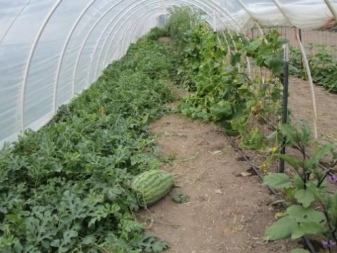
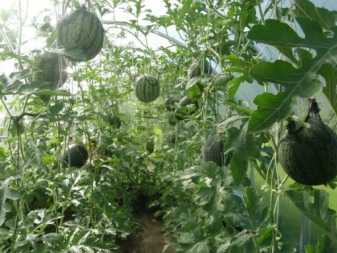
Other important points of watering watermelons under the film:
- if it is decided (or obtained) to water melons once a week, 7 liters of water go into each hole (with an average size of the fruit), if it comes out to water 3-4 times, then 3 liters;
- in the flowering phase, watermelons are watered often, every 3 days for sure, but there should not be abundant watering;
- during the ovary period, watermelons are watered in the greenhouse only once a week, but there should be more liquid;
- watering stops a week before harvest.
The optimal parameters of air humidity in a greenhouse are 50%, and soil moisture is about 65% and higher.

In the open field
Even before planting watermelons, the ground should be moistened, and then leave it alone for 2 days. From the third day, watering is carried out every other day until the moment the color appears. Each bush will take 2 liters of water (no more than 3). As soon as the color has appeared, you need to cut back on the number of waterings to 2 times a week. But at least 7 liters of water (or even all 10 liters) will already be sent under the bush. The soil should be deeply moistened, and for this, water should be poured gradually. Watering is carried out at the root, other parts of the plant are not affected.
Watering is also best after sunset, but you can do this in the early morning as well. If it rains, you can stop for 4-5 days. When the fruits have formed, watering does not stop. They are made once or twice a week with the obligatory loosening of the earth and mulching around the watermelon stem. By the way, it is a good idea to put some straw under the fruits - this is a good "inoculation" against rot.
The depth of irrigation is 30-45 cm, but if it is a small seedling - 5-7 cm. During flowering, the depth can reach 50-60 cm, and during the period of fruit formation, all 70 cm. 12 days before harvesting, all watering stops.
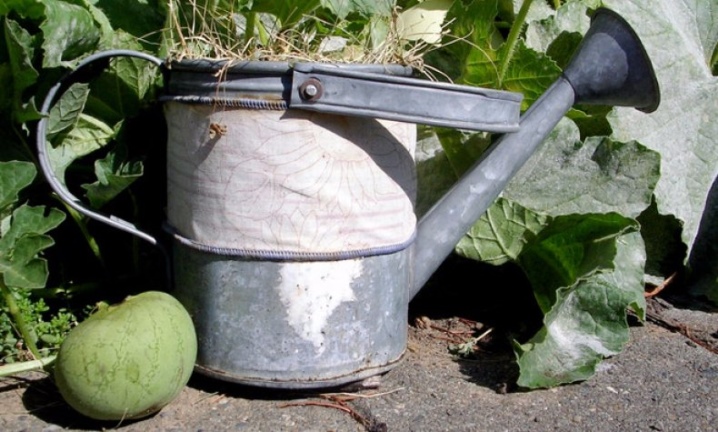
Irrigation methods
Drip irrigation, as already noted, is a very cool system, the logic of which is in regular, metered and safe watering for watermelons. You can buy a ready-made system: this is a hose, a main tap, various branches, additional taps and plugs. Just before buying, you will have to calculate the length of the structure and outline a plan according to which it will be located on the beds. Once acquired, it is laid on the ground and connected to a water source. Hoses are laid in marked places, plugs are installed at their ends, holes can be made in the hoses, and irrigation can be turned on.
If a person cannot, for example, manually regulate watering, he can buy a system equipped with a timer. That is, according to the schedule, the system itself will water the watermelons. Someone prefers the independent manufacture of such a design, or rather, its primitive analogue. This is done using plastic bottles. Their bottom is cut off, the lid is unscrewed, the bottles are inserted upside down into the soil, and dug into it up to the neck. The gardener fills them with water. But there is a problem: bottles are needed very large, 10 liters each.
A drip system is also built from the hoses: they are conveniently laid out, holes are made in them, connected to the main hose, and it is already connected to the water source.

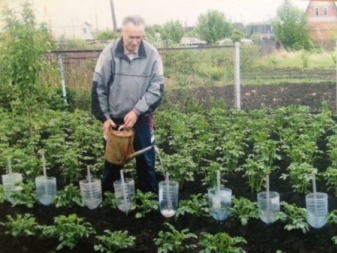
Other 2 types of irrigation - bucket and rain... Rainfall is possible only outside the greenhouse, and it gets on the leaves and fruits, which is undesirable, and the bucket is very laborious. Therefore, it is more convenient to build or install a ready-made drip irrigation system from all sides. The main thing is that with this method, water comes only to the roots, which means that watermelons use it to the maximum.
And one more way: watermelons are also poured with water from a hose, but not at the root, but with the direction of water in special furrows. They are dug up between the rows. It turns out that water does not get on the leaves and fruits (which is fundamentally important) and is harmoniously distributed over the garden.
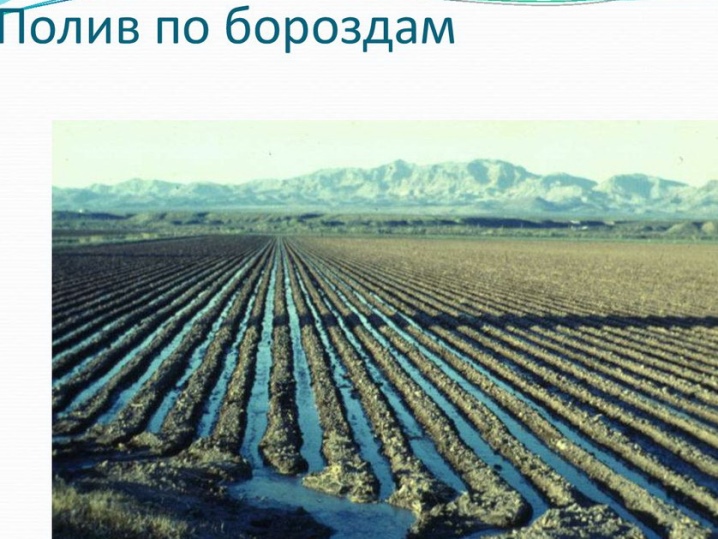
Useful Tips
Growing watermelons, especially in a region that is not traditional for this business, is not so difficult as it is scary. The summer resident is afraid of mistakes, afraid of weather surprises and wrong actions that will erase all work. But most of the potential problems can be foreseen.
Useful tips for a beginner in growing watermelons will not be superfluous.
- If this is a middle strip, then you should select early and mid-season varieties of watermelon. If it is decided to grow melons in the northern region, the only hope is for early varieties and hybrids specially bred for such a climate.
- Watermelons should be planted in a well-lit area, otherwise, regardless of the quality of watering, it will not have time to fully ripen.
- After watering, the soil must be loosened, and then mulched with fresh grass. Yes, it takes time, but this increases the moisture retention in the ground, and the watermelons become more protected from pests.
- Pouring a bucket under the root is a filigree technique that few people can handle. Therefore, the water must first be poured into a watering can with a long nose. This will prevent liquid from spilling onto other parts of the watermelon.
- If you over-irrigate the melons during shoot formation, the plant will become vulnerable to fungi.
- With drip irrigation, the feeding of the crop becomes many times easier, and it becomes more uniform and accessible to the plant.
- Another way to check soil moisture (besides a wooden stick or pencil) is to take a lump of earth in your palms, carefully removing it from a depth of about 10 cm.
Let these tips help you reap an enviable harvest!
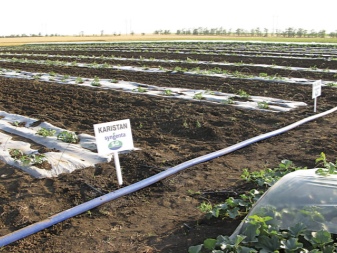
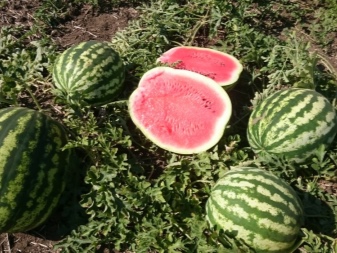
For more information on watering watermelons, see the next video.













The comment was sent successfully.